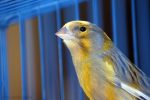According to the article “How to Attract Frogs and Toads to Your Garden,” published by Grow a Good Life, “Both frogs and toads are beneficial to the garden because they feed on many pests such as, bugs, beetles, caterpillars, cutworms, grasshoppers, grubs, slugs and a variety of other pests. A single frog can eat over 100 insects in one night,” which means that the addition of a natural predator to one’s backyard eliminates the need for chemicals.
Be Aware of These Factors First
The first thing to keep in mind when planning a frog pond is that it is never a good idea to buy frogs or toads from the pet store. The reason for this is that these domesticated frogs and toads are generally suited for specific environmental conditions. When placed outside of these conditions, they will either die right away, or they will have no predators to keep the population down and become an invasive species to the gardener’s backyard or neighborhood.
Maryland’s Department of Natural Resources put out an article explaining why it is not a good idea to purchase and release tadpoles or frogs. Alongside the chance of overpopulation, invasive frogs and toads “can harbor potentially hazardous diseases.” Additionally, frogs and toads that are native to the area will likely have a different genetic makeup than those found within pet stores. It is best to keep away from buying one’s amphibian friends, unless intending to keep them in an inside enclosure.
There is also no need to spend one’s money on frogs when most temperate areas have frog species native to the area. Instead of manually bringing the frogs into one’s own backyard, the trick is to make a habitat that they will be naturally drawn to. In areas with many lakes, rivers, ponds and streams, this process is easier. The gardener must simply provide enough food, shelter and water to attract the frogs and toads.
Another factor to keep in mind is that gardeners with cats or dogs that play outside should be careful about the placement of the frog pond. According to “How to Attract Frogs and Toads to Your Garden,” frogs and toads secrete a deadly toxin from their skin as a defense mechanism. Generally, this toxin in most common frogs and toads is not harmful to humans, but it can become deadly to smaller animals upon ingestion. For this reason, pet owners should place their garden out of reach of their pets. Naturally, the home’s location is a big factor here as well. There are some areas where the native frog species are more harmful than others.
How To Build a Frog Pond
Building a frog pond is easy — it does not have to be extravagant or cost a lot. Frogs and toads need three basic things to survive: food, shelter and water for consumption and breeding.
Concerning the need for food, most outside frogs have little trouble finding bugs to munch on, so most shaded areas will do just fine. However, if the gardener is building this pond specifically as a pesticide replacement, the location of the frog pond should be near, if not inside of, the garden. If there is enough space, some gardeners will also grow plants with big leaves around their frog ponds for added protection.
Moisture is also important, so it is necessary to keep the frog pond in a shaded area, where the water will not easily dry up. For nesting, frogs love still water with a sticky, dirt layer at the bottom. This is because they have to return to water in order to lay their eggs. This being the case, still water may also attract unwanted mosquito eggs — changing the water regularly will prevent them from hatching. Even though the frogs and toads will likely enjoy eating these too, mosquitos are carriers of deadly diseases and should be prevented at all costs. Some gardeners will install a filter or fountain for this reason, but these items are unnecessary if the water is changed regularly. The gardener should also check the water before cleaning in case there are tadpole eggs present.
The pond part can be created a number of ways, but the easiest is to take an old plant saucer — preferably one with a few inches of depth — and bury it in the ground, leaving the rim just barely above the soil. Then, lightly cover the bottom with some dirt before pouring in the water. The gardener can also keep some decorative stones around or inside the pond, depending on the desired style. Those who want a bigger pond can also dig a larger hole and then layer the inside with a plastic covering to prevent leaking. This method takes more time and effort, but it allows for more freedom over the shape. Lastly, there are pond liners for sale online and in some hardware stores, but these can be more costly than the other construction options.
Creating the frog pond shelter is generally considered the most fun part of this project because there are so many ways to do it. Many people take an old clay or ceramic flowerpot and bury half of it in the dirt. Some also create little welcoming signs for their frog guests. In “How to Make a Toad House,” Anthony Altorenna created a tutorial for making a “Toad Abode.”
Gardeners with children can even make decorating the flowerpot into a fun afternoon crafting session, and there is no limit to how many of these shelters can fit around the frog pond. Whether created out of a ceramic pot, a wooden base, a glass jar or any other recycled object, the most important part is to have fun making it. There are plenty of cute designs on Pinterest to help with finding ideas and getting started.










